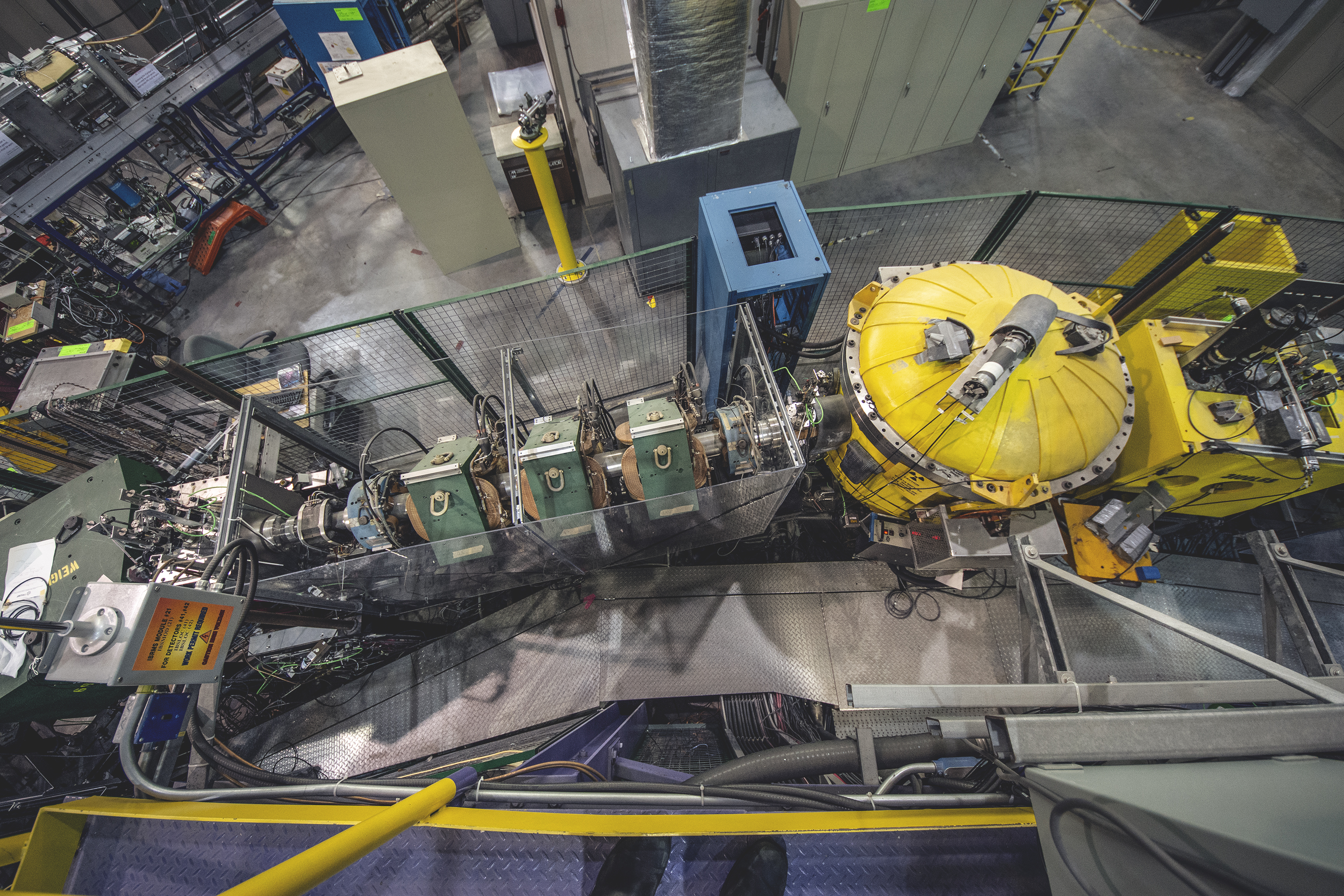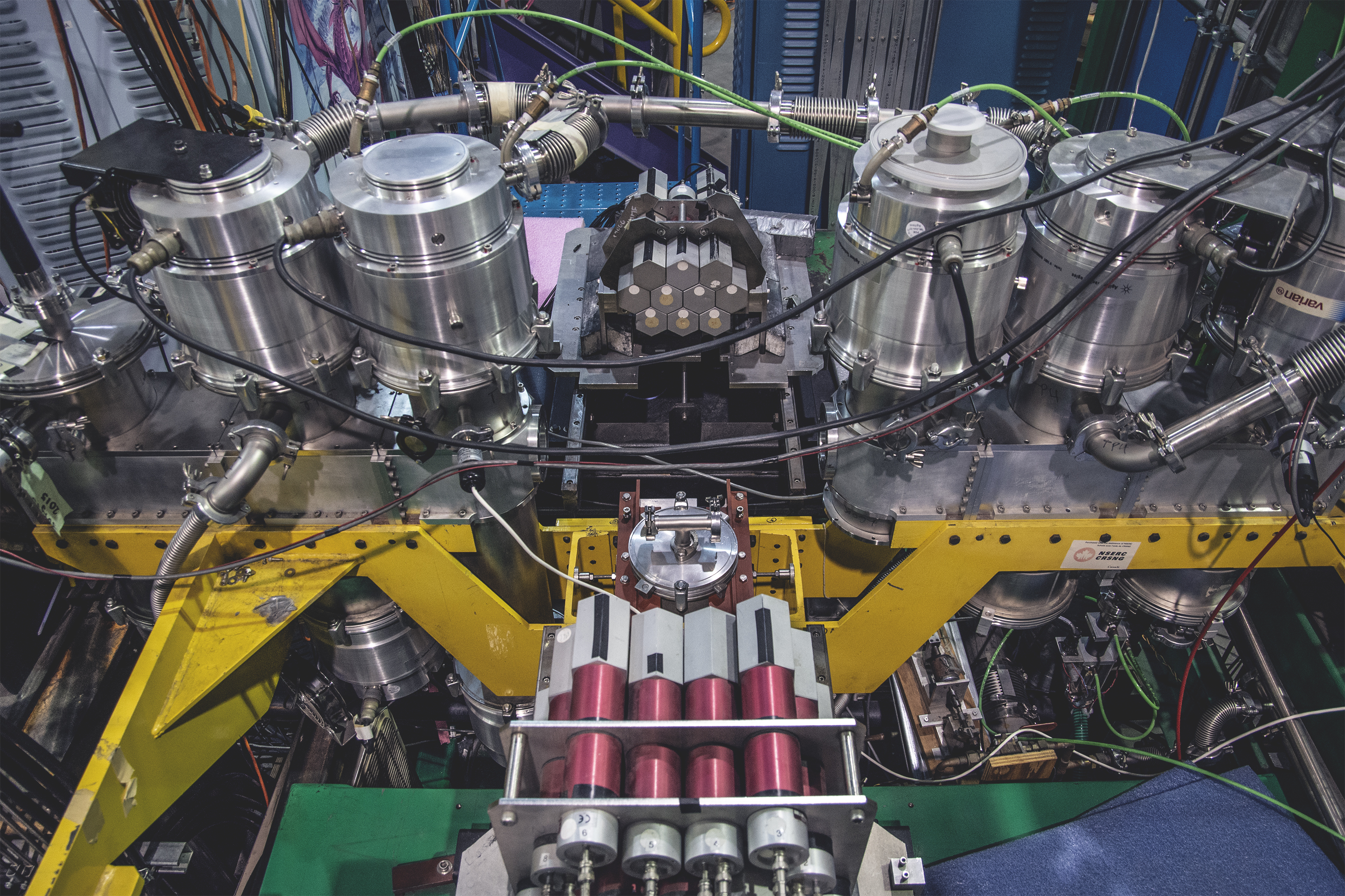
TRIUMF’s unique DRAGON (Detector of Recoils And Gammas of Nuclear Reactions) facility is giving astronomers a clearer view of our stardust origins by simulating the rapid nuclear reactions that take place in exploding stars. It is the only facility in the world capable of experimentally measuring many of these astrophysical reactions.
DRAGON is a recoil mass spectrometer, a tool designed to simulate the nuclear reactions in stars and then identify the reaction products, the recoils.
In the Big Bang, the only elements formed were hydrogen, helium and minute quantities of lithium and beryllium. All of the other naturally occurring elements of the Periodic Table, from carbon to gold and uranium were, and are being, created in stars.
The big question is: how? Observational astronomers and astrophysics theorist work to figure-out the nuclear reaction processes in stars by studying stars’ elemental fingerprints. These are the specific ratios of different elements astronomers see produced by exploding stars, such as nova and supernova. However, in many cases, the specific underlying processes that produce the observed elemental fingerprints are still a mystery, unexplained by stellar models.
This is why DRAGON’s experimental results are so important. The high temperature in an exploding star creates a zoo of very short-lived radioactive isotopes not formed in usual stellar burning. The presence of these rare isotopes creates tens of thousands of different possible nuclear reaction pathways, and which path occurs has a huge influence on the elements that will be produced. What’s key to determining these reaction pathways is the probability that one of these rare isotopes will react.
DRAGON precisely measures the reaction rates of these short-lived radioactive isotopes, particularly a fusion reaction called radiative capture. For example, in 2013 images from the Hubble Space Telescope identified fluorine for the first time in the ejecta of a nova explosion. To enable astronomers to make sense of fluorine’s observed presence, DRAGON researchers measured the probability of one of the key fluorine production radiative capture pathways, the fusion of neon-19 with hydrogen, producing sodium-20 and a gamma ray.

DRAGON is designed to experimentally pinpoint the rapid nuclear processes and pathways that occur in exploding stars, primarily for elements created in nova explosions. Novas occur in stellar pair systems, often involving a red giant star (a bloated, dying Sun-like star) and a white dwarf, (the dense, hot carbon-rich cinder of such a star in close proximity). The white dwarf gravitationally draws material, primarily hydrogen, from its neighbour onto it surface until this nuclear fuel builds up to tipping point and explodes in a nuclear flare.
With TUDA (the TRIUMF U.K. Detector Array), the TRIUMF UK Detector Array, TRIUMF scientists and international collaborators are making critical insights into key stellar element formation pathways that can only be experimentally studied using accelerated rare isotopes.
TUDA’s specialty is the analysis of charged particle reactions. In these, two nuclei fuse but then break apart again into two different sized particles, a heavy and a much lighter one, both different from the initial two particles.
In some key stellar charged particle reactions, the heavy product is lighter than the heaviest reactant. For example, in one key reaction in stars, a nucleus of fluorine-18 fuses with hydrogen, but spits-out an alpha particle (a helium nucleus) leaving the lighter oxygen-15. This produces a stellar nuclear element formation cycle akin to the game Snakes-and-Ladders. Heavier elements are created by consecutive fusion reactions, but then the elemental building process “slides” down to lighter nuclei via the charged particle reaction by emitting an alpha particle.
For nuclear astrophysicists working to understand stellar nucleosynthesis, the key is to determine how probable particular charged particle reactions are at a given stellar temperature, and this can only be determined experimentally in laboratories, like TRIUMF, with access to accelerated rare isotopes. Similarly, the combination of TRIUMF rare isotopes and DRAGON and TUDA’s high detector sensitivity means that many of these charged particle measurements are the first of their kind.
Precisely measuring charged particle reaction rates enables astronomers to peer directly into the hearts of stars and their explosions by using these real laboratory experimental measurements to interpret observational data and fine-tune stellar computational codes.
